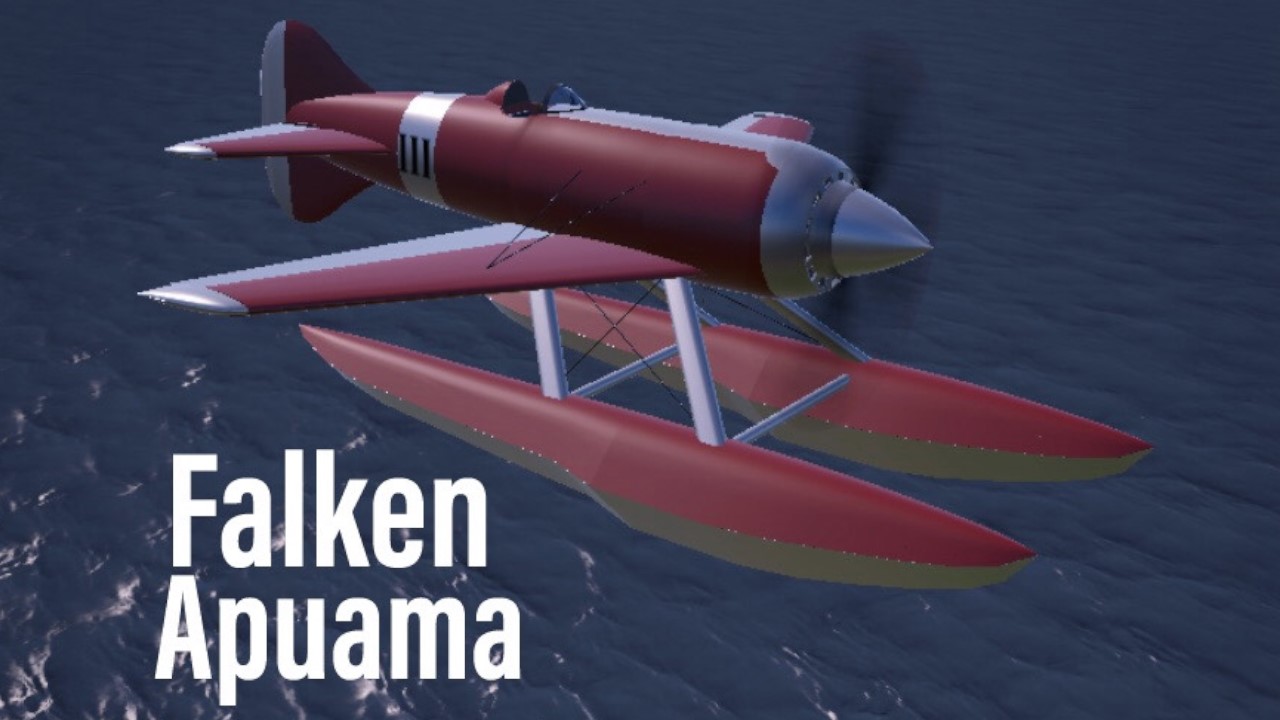History
Development began in 1929 right after Felka lost to Estio in the Schneider Cup, and this time Felka wanted a plane that could go over 600 Km/h, and so Falken set to work.
Originally, the Apuama was planned have an inline engine, but the engineer in charge of aero-engine development at Falken was unwilling to use an inline engine, saying that he would “Prove to the world that radial engines are better”. And so, Falken managed to obtain a contract to build two of the biggest and most powerful radial engines they could find, 18-cylinder radial engines providing 2000 hp (limited to 1000 for this challenge).
When Apuama I, the prototype, was completed in 1930, the test pilot, Marco Pagot, reported intense vibrations when the engine was on and instability when making turns. The plane was dismantled so it’s parts could be used in the next plane, Apuama II, which had a completely redesigned fuselage and tail, solving the problems the prototype had, and so they made the Apuama III so both Apuamas could compete in the Schneider Cup.
Pilot
Marco Pagot was Falken’s test pilot since the start of the Schneider Cup, in 1913, and went on to serve in the Felkan war in 1939 being 46 years old. He survived the war and retired shortly after.
Marco is credited with 67 kills and, by the end of the war was considered one of Felka’s best pilots, although after the war he became cynical and disillusioned with the world and himself.
Misc
Top Speed: 690 Km/h at sea level and 740 Km/h at 1,500 meters
Takeoff Speed: 180 Km/h
Stall Speed: 160 Km/h
Manufacturer: Falken
Produced: 1931
Numbers Built: 3 (one being a prototype)
Powerplant: 18-cylinder radial engine with 1,000 hp
Controls
VTOL: Flaps
Fun fact: Apuama means fast in tupi guarani
Specifications
Spotlights
- Rondine 3.0 years ago
General Characteristics
- Predecessor CLOSED 1931 Schneider Cup Challenge
- Created On iOS
- Wingspan 26.6ft (8.1m)
- Length 28.2ft (8.6m)
- Height 12.5ft (3.8m)
- Empty Weight 4,203lbs (1,906kg)
- Loaded Weight 4,576lbs (2,075kg)
Performance
- Horse Power/Weight Ratio 0.218
- Wing Loading 29.7lbs/ft2 (144.8kg/m2)
- Wing Area 154.3ft2 (14.3m2)
- Drag Points 1090
Parts
- Number of Parts 241
- Control Surfaces 6
- Performance Cost 839







A good entry, relatively realistic, but the HP/Weight Ratio is very high, and the plane takes a veeeeery long time to lose speed in the water
(Uma boa entrada, relativamente realista, mas a Relação HP/Peso é muito alta, e o avião demora muuuuito para perder velocidade na água)